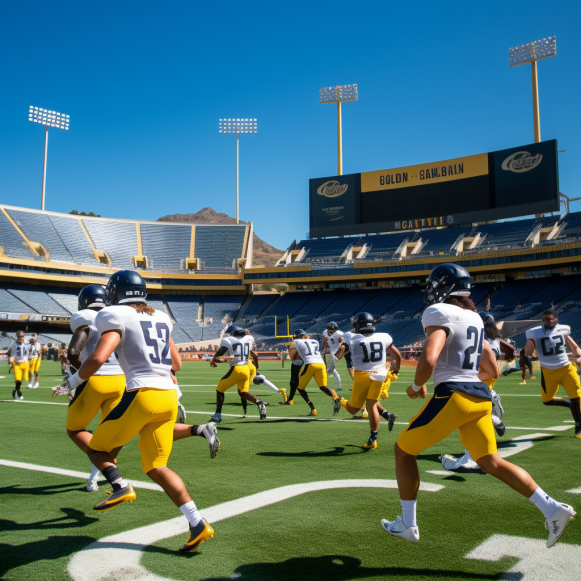Pac-12 legal affairs: Lawsuit against NCAA looms as ‘Pac-2’ consider rebuilding plans
Power Five conferences are defendants in massive antitrust case
Early next week, the legal battle for control of the Pac-12 takes a critical turn. Will Washington State and Oregon State be the conference’s sole members of the governing board? Will the ten departing schools keep their votes and defy the two remaining?
The outcome of a preliminary injunction hearing in Whitman County, Washington, will help define the next steps for all 12 schools and could determine the fate of tens of millions of dollars in Pac-12 assets.
However, a recent court decision in Northern California clarified the other side of the ledger. The Pac-12 brand itself could become a huge liability.
The ruling of U.S. District Court Judge Claudia Wilken in an antitrust case has brought the NCAA closer to paying billions of dollars in damages.
Wilken specifically granted class-action status to a three-tiered lawsuit seeking compensation for the use of thousands of former college athletes’ names, images, and likenesses.
According to court documents obtained by USA Today, the so-called House lawsuit, named after former Arizona State swimmer Grant House, seeks $1.4 billion in damages from the NCAA and its member schools.
Not all of the member schools, mind you, but only those in the Power Five conferences.
Along with the NCAA, the Pac-12, ACC, Big 12, Big Ten, and SEC are defendants.
Can you see where this is going?
If Washington State and Oregon State gain control of the governing board and attempt to rebuild the Pac-12 under the Pac-12 banner, they may be subject to any damages awarded by the lawsuit or any settlement reached between the plaintiffs and the NCAA.
But what if the Cougars and Beavers decide to join the Mountain West Conference, which is not a party to the lawsuit? Would they still be liable for damages? According to a source familiar with the House case, this part is less clear.
“The case will be settled — there’s no way it’s going to court,” a source said. “But there’s a lot to be sorted out.”
According to the source, one aspect of the Pac-12 legal battle raging in Washington state is abundantly clear: attorneys for both the plaintiffs (WSU and OSU) and the defendants (the ten departing schools) are not solely focused on the conference’s assets, which include NCAA Tournament units and Rose Bowl contracts worth tens of millions of dollars.
“Who’s responsible if it all goes away?” asked the source. “What are the risks?” What about the lease (on the San Ramon production studio)? What about the legal action? It’s one of the most serious problems.”
There is no greater risk of liability than a class-action lawsuit filed by the House.
Two legal challenges to the NCAA’s economic model stand out in the minds of campus administrators: the National Labor Relations Board’s complaint against the NCAA, Pac-12, and USC, which alleges unfair labor practices and could result in athletes being classified as employees, and the House lawsuit.
More than 10,000 athletes are involved in the House case, which is divided into three tiers, each of which received class status from Wilken last week: football and men’s basketball players; women’s basketball players; and athletes from all other sports.
(The other plaintiffs, in addition to House, are former Illinois football player Tymir Oliver and TCU basketball player Sedona Prince, whose career began at Oregon.)
The lawsuit’s central goal is to compensate athletes for the use of their name, image, and likeness over a multi-year period prior to the NCAA’s legalization of NIL in the summer of 2021.
However, unlike the current NIL rules, which allow for compensation for promotional and endorsement opportunities (for example, USC quarterback Caleb Williams appearing in Dr. Pepper commercials), the House lawsuit focuses on the Power Five’s primary source of revenue: media rights revenue.
According to plaintiffs’ experts, the athletes’ NIL accounts for 10% of the market value of the media contracts.
So, if the Big Ten’s $1 billion annual contract with Fox, CBS, and NBC were framed by the House case, the conference’s athletes would be responsible for $100 million of the total valuation — and should be fairly compensated. (The majority of the NIL value is attributed to football and men’s basketball players.)
The presiding judge, Wilken, has previously ruled against the NCAA in cases involving the long-standing amateurism model, including Ed O’Bannon’s famous antitrust lawsuit.
It is unclear how the damages in the House case would be awarded. However, if the NCAA’s member schools were forced to bear the financial burden, we can provide some rough numbers for context.
The plaintiffs are seeking $1.4 billion in damages, but under US antitrust law, damages could be tripled to $4.2 billion.
Let’s say the settlement amount is $3 billion.
And, for the sake of simplicity, let us assume that the damages are distributed equally among the 65 schools that comprised the Power Five from 2016 to 2021.
That works out to $46 million per school.
Because the conference media contracts at the heart of the case were not equal, and the number of scholarship athletes at each school varied, the actual damages would differ. However, our calculations show how much money is at stake.
How will the House lawsuit affect the already-fractious Pac-12?
The ten departing members would presumably take the losses with them to their new homes in the ACC, Big 12 and Big Ten.
But what if Washington State and Oregon State decided to dissolve the Pac-12 on their own, or with the support of the other ten schools? Will the House case follow in the footsteps of the Cougars and Beavers into the Mountain West? Their annual revenue would be reduced. Could they possibly avoid the damage?
And will the lawsuit influence their decision to re-create the conference?
The outcome, like so much else in the legal world, is complicated and crucial for the two remaining schools.




